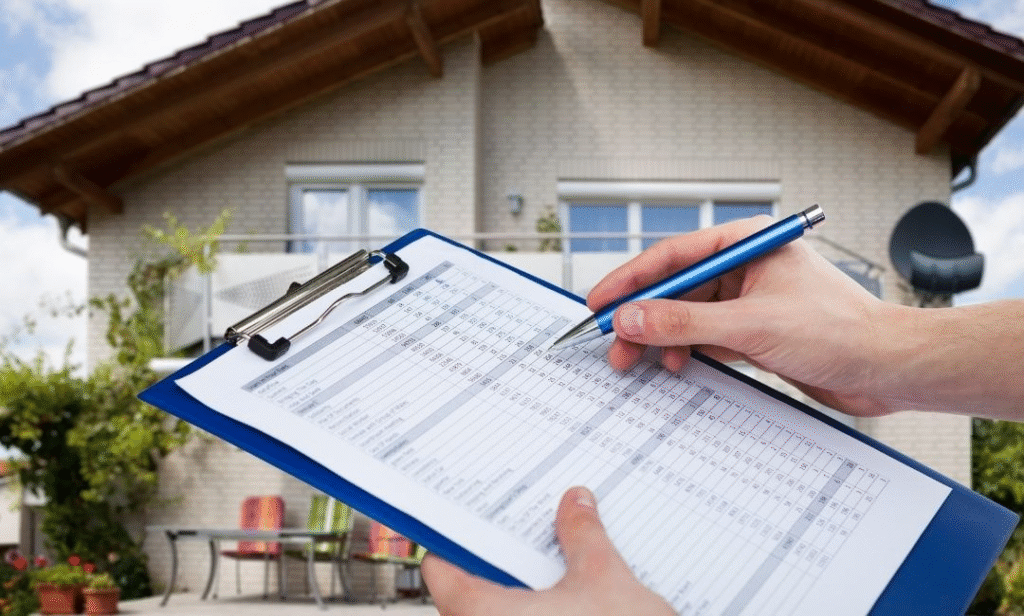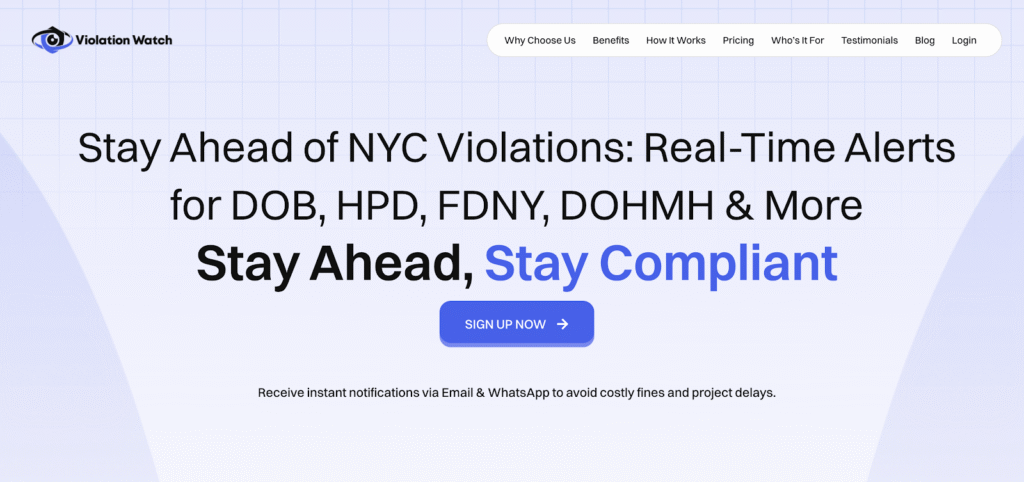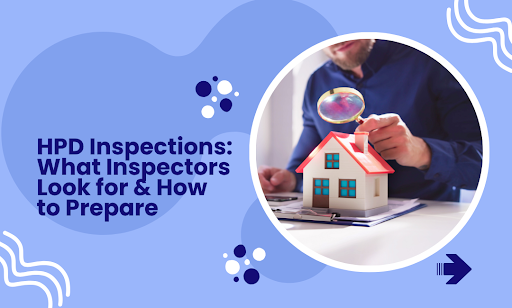HPD inspections in NYC rarely come with a polite warning. One visit can reveal violations you didn’t know existed—triggering fines, hearings, or worse. The truth? Many property owners assume they’ll pass without problems. Then an inspector walks in, cites multiple issues, and leaves them scrambling to fix everything on a tight deadline.
This article takes the guesswork out of the process. It breaks down why HPD inspections happen, what inspectors actually check, and how to prepare so you stay ahead of violations before they multiply.
Here’s what you’ll get:
- Why HPD inspections happen and the law behind them
- Common triggers that bring inspectors to your property
- A breakdown of what inspectors look for during each visit
- Practical preparation steps to reduce violation risk
You’ll leave with a clear plan to handle inspections confidently—and prevent violations from piling up in the first place.
Why HPD Inspections Happen and the Law Behind Them
HPD inspections are not random. They follow clear legal authority under New York City’s Housing Maintenance Code and related state laws. These inspections exist to enforce health, safety, and housing standards across residential buildings.
When inspectors arrive, they focus on compliance with rules that protect tenants from hazards like lead paint, lack of heat, or structural risks. The city has set legal obligations for owners to maintain properties in habitable condition. Inspections verify that those obligations are met.
Common Triggers for an HPD Inspection
HPD inspections in NYC follow strict regulatory frameworks rather than random scheduling. Multiple events and legal requirements can activate the inspection process, each carrying specific implications for building owners. Below is a detailed breakdown:
1. Tenant-Initiated Complaints to the New York City Department
When tenants submit complaints via 311 or directly through HPD’s online portal, the system automatically generates inspection requests. These complaints often involve:
- Lack of heat or hot water during the official heating season
- Structural concerns, such as broken stair railings or roof leaks
- Environmental hazards like lead paint, mold, or pest infestations
HPD prioritizes complaints involving health and safety risks, triggering prompt site visits.
2. Periodic or Cyclical Inspection Programs
Certain buildings fall under mandatory inspection cycles even without complaints. For example:
- Multiple Dwellings Law requires inspections in larger residential buildings on recurring schedules.
- Lead paint laws trigger automatic inspections in units where young children reside, regardless of complaint history.
These periodic inspections ensure compliance before conditions worsen into major violations.
3. Referrals From Other City Agencies
HPD frequently receives referrals from agencies like:
- Department of Buildings (DOB) when structural defects threaten habitability
- Department of Health (DOH) after child health investigations reveal environmental hazards
- Fire Department (FDNY) when fire safety issues surface during separate inspections
Interagency referrals often escalate inspection urgency because they involve overlapping public safety concerns.
4. Follow-Up on Existing Violations or Court Orders
Properties with open violations remain under active monitoring until corrections are verified. Follow-up inspections confirm:
- Repairs meet housing code requirements
- Legal orders, such as those from Housing Court, have been fully satisfied
Failure to address violations from prior inspections increases penalty severity and can lead to litigation.
5. Emergency Conditions and High-Risk Properties
Events like building fires, severe weather damage, or public health crises can trigger emergency HPD inspections. High-risk properties with repeated complaints or a history of serious violations often receive unannounced inspections to protect tenant safety.
To help clarify, here’s a professional breakdown of the main legal foundations for HPD inspections:
| Legal Basis | Purpose of Enforcement | Typical Inspection Triggers |
| NYC Housing Maintenance Code | Enforces building safety and habitability standards | Complaints, annual cycles, referrals |
| Multiple Dwelling Law | Governs residential building operations | Tenant safety and sanitation issues |
| Local Laws on Lead Paint & Mold | Protects public health and environmental safety | Child health referrals, moisture complaints |
Understanding these laws helps owners prepare proactively before inspectors even knock on the door.
What Inspectors Look For During HPD Inspections

HPD inspectors arrive with a checklist shaped by housing laws and safety standards. They identify violations that threaten health, safety, or habitability. Each visit follows a structured process to make sure nothing gets overlooked.
Inspectors typically check:
- Building exteriors for structural integrity, unsecured facades, or hazardous conditions near entrances and sidewalks.
- Common areas like hallways, stairwells, and basements for lighting, cleanliness, and fire safety compliance. Access to mechanical rooms must not be limited during the visit.
- Essential services, including heat, hot water, and electricity to confirm proper operation during the required seasons.
- Sanitation and pest control for signs of infestation, with attention to trash handling and improper food storage.
- Lead paint and mold conditions with special focus on units housing children under six. Abatement and clearance must be performed by a certified professional.
- Window guards and child safety measures to meet city requirements for family housing units.
- Fire safety equipment such as self-closing doors, smoke detectors, and fire escapes, including door-closing force and latch performance.
Each inspection ends with a documented list of findings that form the basis for potential violations. These violations carry strict correction deadlines, so preparation matters well before the visit. For voucher-assisted units, violations found during an HQS inspection can suspend monthly housing assistance payments until corrections are verified.
Practical Preparation Steps to Reduce Violation Risk

HPD inspections require a structured approach to preparation. Property owners and managers who follow a documented process minimize the risk of violations and maintain compliance with NYC housing regulations. Below are actionable steps designed for thorough inspection readiness.
Conduct Internal Walkthroughs Before Any Inspection
Pre-inspection walkthroughs should replicate official HPD inspection protocols as closely as possible. Create a standardized checklist aligned with the Housing Maintenance Code, Local Law requirements, and prior violation histories for the property.
During these reviews, code enforcement conducts detailed checks to confirm buildings meet the standards established under housing law. Inspectors often inspect subsidized apartments prior to scheduled compliance deadlines, focusing on HQS compliance-related issues affecting tenant safety.
Key technical points to include:
- Structural Integrity: Inspect walls, ceilings, floors, and stairwells for cracks, leaks, or loose components. Document repairs with time-stamped photos.
- Fire Safety Systems: Verify self-closing doors, smoke alarms, sprinklers, and fire escapes meet NYC Fire Code and HPD enforcement standards.
- Mechanical Equipment: Check boilers, water heaters, and HVAC units for operating certifications, pressure tests, and safety shutoff valves.
- Lighting & Egress Routes: Measure light levels in corridors, public areas, and stairwells using lux meters; confirm exit signage is illuminated and compliant.
- Pest and Sanitation Issues: Log sightings, treatment schedules, and sealed entry points for HPD verification.
If any unit shows peeling paint, faulty electrical outlets, or illegal gates blocking emergency exits, immediate corrective work is required to prevent a fail inspection outcome.
Each finding should be recorded with location identifiers (apartment numbers, floor levels) for accurate follow-up.
Centralize Documentation for Quick Access
HPD inspectors request documents on-site. Disorganized records delay inspections and often lead to administrative violations. Maintain a centralized compliance binder or secure digital platform containing:
- Annual Boiler Inspection Certificates (per New York City Department regulations)
- Lead-Based Paint Risk Assessment Reports under Local Law 1 of 2004
- Pest Control Service Logs meeting DOH standards
- Mold Remediation Documentation, if applicable under Local Law 55
- Housing Court Compliance Orders and proof of resolution
Where applicable, upload the approved. file copies and keep them in a secure system that inspectors can search quickly during reviews. Organize records chronologically and cross-reference them with unit numbers or building IDs. This approach allows inspectors to verify compliance without delay and signals operational readiness.
Verify Tenant Communication and Complaint Resolution
Unresolved tenant complaints frequently trigger Class B or C HPD violations. Create a complaint resolution protocol that captures:
- Complaint source (311, building portal, direct tenant resources)
- Date received, assigned staff member, and response timeline
- Corrective actions with completion dates and photo evidence
- Tenant confirmation of resolution, where applicable
Maintain a digital log accessible to management, legal teams, and compliance staff to demonstrate proactive issue handling during inspections. If tenants request legal help for persistent hazards under the lease, the log serves as proof that the landlord acted promptly and did not fail inspection obligations tied to the HAP contract.
Schedule Preventive Maintenance for High-Priority Systems
HPD inspections often focus on mechanical and life-safety systems because failures here pose serious risks. Implement a preventive maintenance schedule that meets or exceeds NYC regulatory requirements:
- Boilers & Heating Equipment: Service annually before October 1 to avoid heat-related violations during the official heating season.
- Elevators: Conduct inspections on a minimum basis required by city regulations; maintain certificates in building records.
- Electrical Panels & Emergency Lighting: Test circuit breakers, GFCIs, and backup lighting quarterly; retain test logs for inspectors.
- Water Supply & Plumbing: Inspect pressure regulators, backflow prevention devices, and main shutoff valves for leaks or failures.
Use licensed contractors for all maintenance, and archive signed service reports to validate compliance.
Train On-Site Staff on Housing Code Requirements
Frontline staff often interact with inspectors first. Provide annual training sessions covering:
- HPD Housing Maintenance Code essentials
- Fire safety and emergency egress standards
- Proper handling of inspector requests and documentation retrieval
- Steps for immediate hazard mitigation when inspectors cite violations
Assign job responsibilities clearly so staff members know which person responds when inspectors issue a notice during housing preservation reviews. Training should also include construction safety basics for any ongoing development projects in occupied buildings.
Distribute quick-reference guides summarizing common violations, correction deadlines, and required reporting procedures to staff members for use during daily operations.
Maintain a Log for All Corrective Actions
Create a centralized corrective action register documenting:
- Date and source of each violation or complaint
- Assigned contractor or in-house technician
- Materials used, repair costs, and completion timelines
- Post-repair verification photos or inspection results
Use unique tracking numbers for each corrective action so documentation links directly to HPD’s division responsible for enforcement. This log simplifies follow-up inspections and shows auditors or legal teams that owners comply with city codes, accept violation notices on record, and pay all correction-related fines on time.
Using ViolationWatch to Strengthen Inspection Readiness

After putting internal processes in place, many property owners want a way to keep everything organized, tracked, and inspection-ready year-round. This is where platforms like ViolationWatch fit in as a natural extension of your preparation efforts.
Here’s how the platform supports compliance tasks already on your checklist:
- Consolidates Violation Data: Tracks all open, corrected, and historic violations across agencies so nothing slips through before inspection day.
- Automates Alerts and Deadlines: Sends notifications when new violations appear or when corrective deadlines approach, reducing the risk of missed inspections or repeat citations.
- Organizes Compliance Documentation: Stores permits, inspection logs, and service records in one secure location for immediate access when inspectors request proof.
- Assigns and Tracks Corrective Tasks: Creates accountability by assigning repairs or compliance steps to staff or vendors with clear timelines and completion tracking.
- Gives Portfolio-Wide Oversight: Offers a single interface for owners with multiple properties to see inspection readiness across all sites at once.
Instead of scrambling before each inspection, owners using ViolationWatch follow a proactive, system-driven approach that keeps properties prepared long before inspectors arrive. This level of preparation ensures buildings stay inspection-ready year-round and significantly reduces the likelihood of repeat Class B and Class C violations, which often carry the steepest penalties.
Stay Inspection-Ready Without the Last-Minute Stress
You’ve now seen how HPD inspections work, why they happen, and what inspectors focus on during each visit. More importantly, you’ve walked through preparation steps that give you control over the process before violations even appear on record.
At this point, you should feel confident about:
- What triggers inspections and how laws shape enforcement
- The specific areas inspectors review inside and outside your properties
- How structured preparation prevents last-minute scrambles and repeat violations
The real shift comes from moving away from reactive, deadline-driven compliance and toward a systemized, year-round readiness plan. That’s where digital tools like ViolationWatch fit naturally into the workflow. Instead of chasing paperwork or checking multiple portals, you centralize violation data, automate alerts, and keep inspection deadlines under control without adding extra workload.
It’s a professional, predictable way to stay inspection-ready—long before the next inspector arrives.

